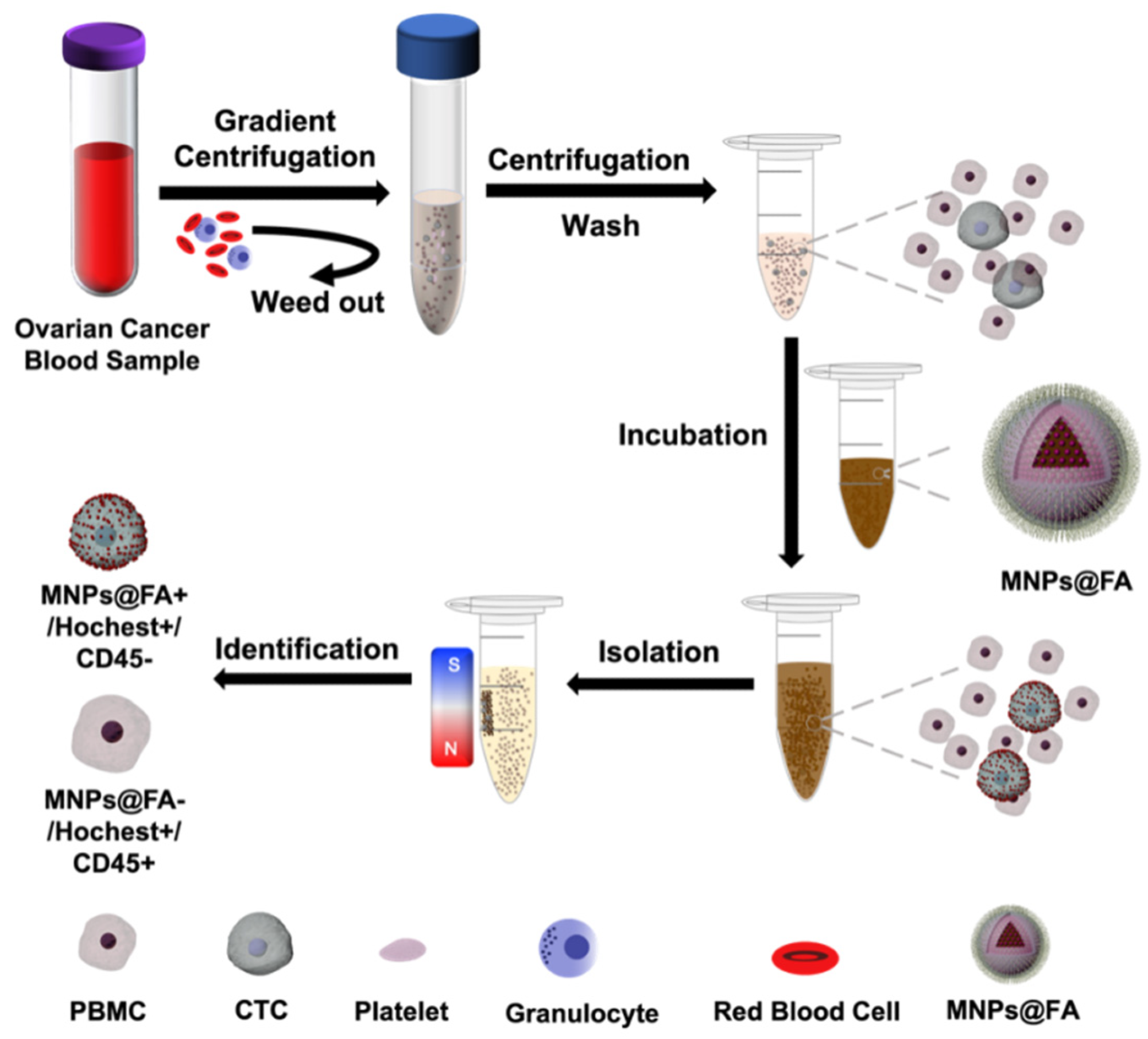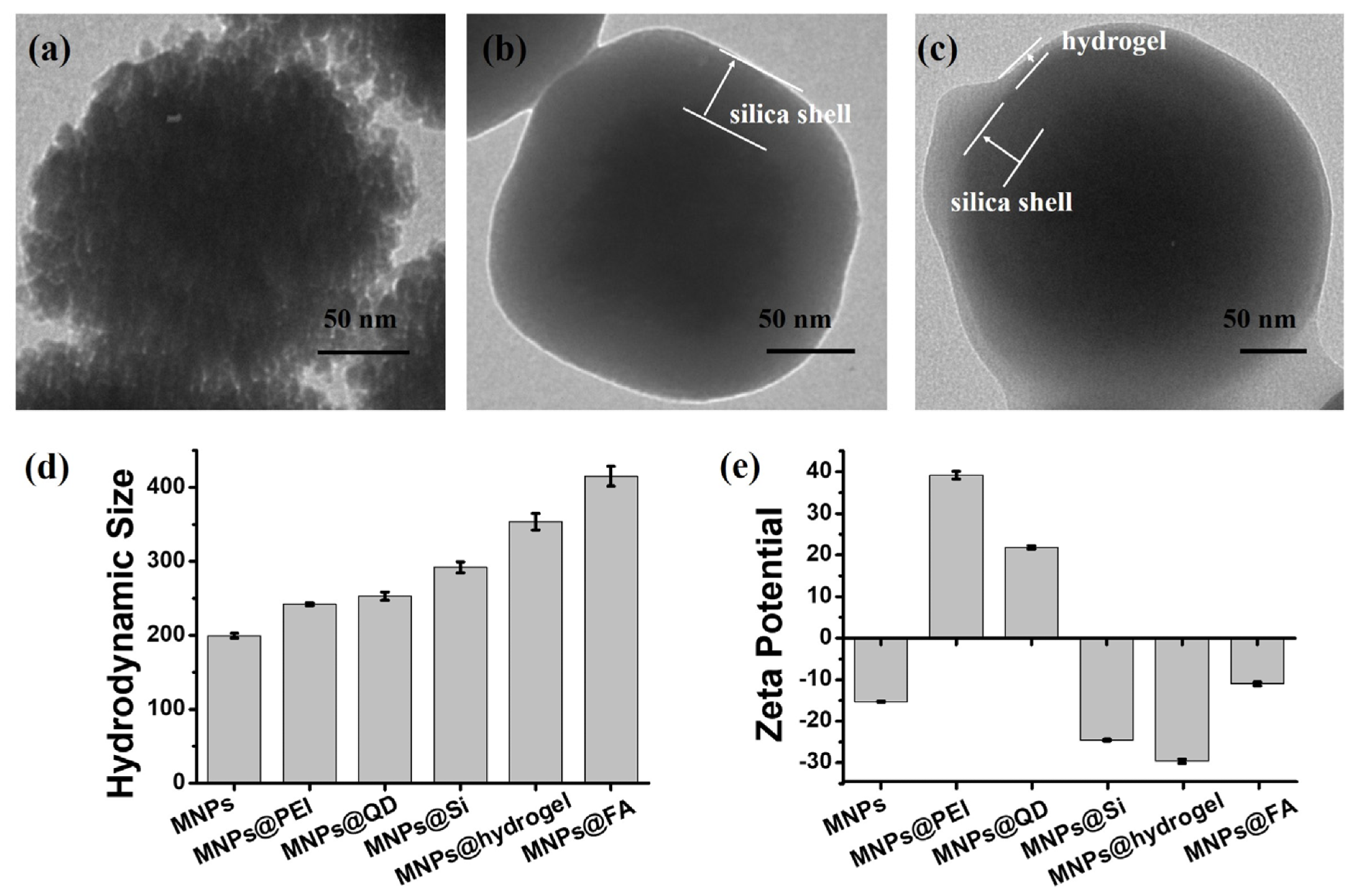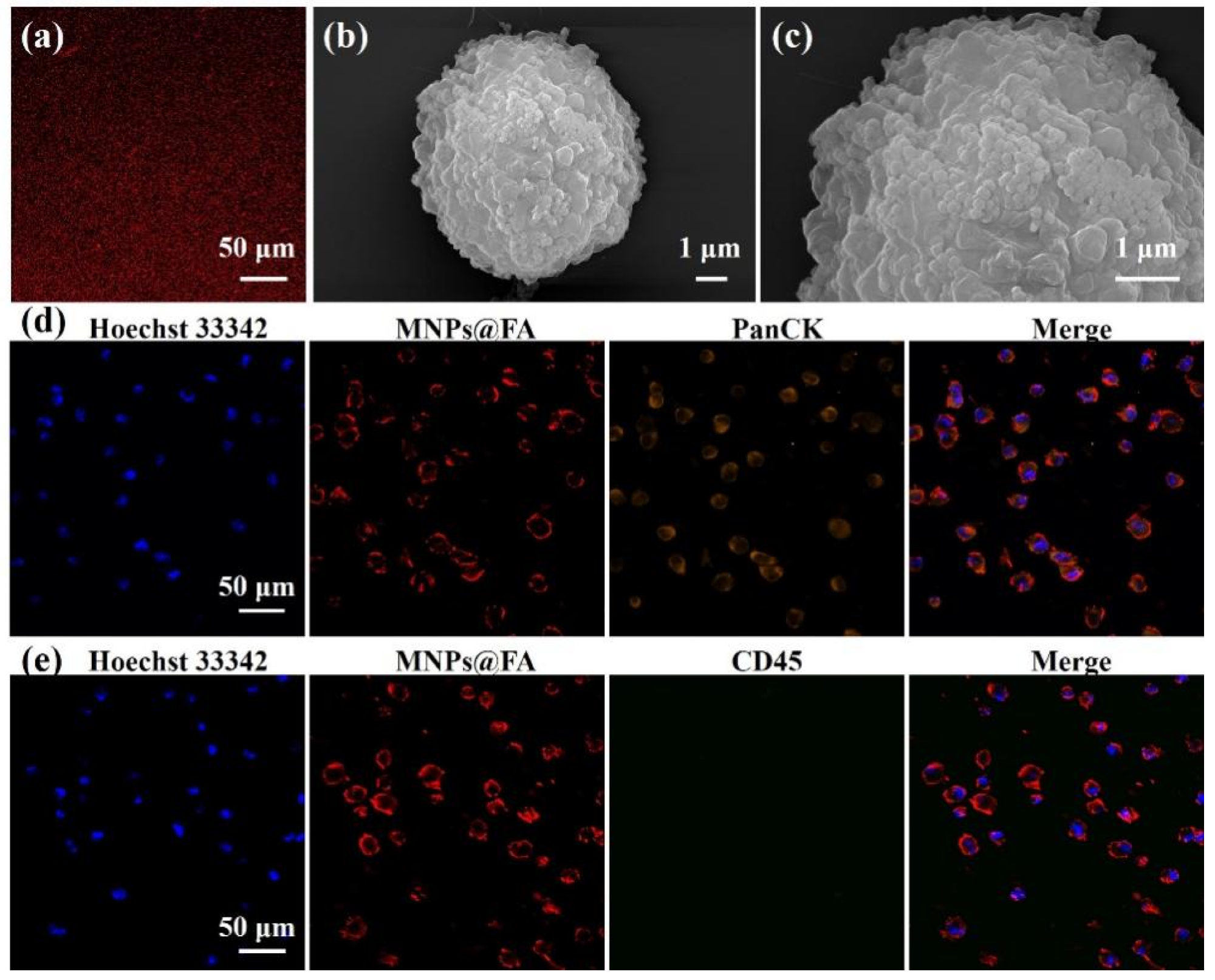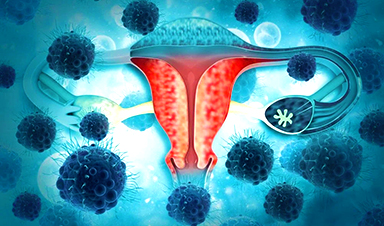Novel cancer research has emerged from the journal, Biosensors, to develop early diagnosis methods for ovarian cancer. With the advancement in nanotechnology, this research has included identifying circulating tumor cells through the use of nanoparticles in a simple, cost-effective and simple approach for ovarian cancer.
What are Circulating Tumor Cells?
Metastasis is a very significant factor in cancer progression and with this comprising cancer-spread into secondary sites from the primary site, it can result in cancer-related mortality as well as approximately 90 % of treatment failures. However, the advancement in biomedical research for detecting cancer formation and metastasis at an earlier stage would enable earlier excision of tumors and reduce mortality rates.
Circulating tumor cells (CTCs) hold an important role in metastasis, as these cancer cells are released into the bloodstream from the primary cancer site. However, while there is a large number of CTCs are released into the circulation, most are eliminated in this area, while a limited number survive and invade organs causing metastasis of primary cancer. Additionally, only a small number of CTCs can be detected in the blood as most escape immune surveillance.

Figure 1. Schematic illustration of the process of CTC separation and identification by folic acid (FA)-modified fluorescent-magnetic nanoparticles (MNPs@FA). © Pan, Y., et al (2022)
Significance
The significance of CTCs lies within their use as a biomarker for possible detection of cancer; this would enable earlier diagnosis of the disease and aid in comprehensive treatment plans for physicians.
As CTCs are derived from the primary tumor mass, they hold genetic information. Their entrance into the circulation at an early stage of malignancy enables their use for diagnostic purposes.
This has led to research focusing on capturing CTCs and isolating them for further analysis, an approach that could potentially be an alternative to invasive biopsies used for diagnosis as well as within a therapeutic strategy in order to monitor treatment efficacy and guide prognoses.
However, the challenge of detecting CTCs as well as isolating them is still high for researchers.

Figure 2. Transmission electron microscope (TEM) images of (a) MNPs@QD, (b) MNPs@Si, and (c) MNPs@hydrogel. Comparison of hydrodynamic size (d) and zeta potential (e) by the DLS and zeta potential measurement for the nanoparticles with different modifications. All data are expressed as the mean ± stand deviation, n = 3. © Pan, Y., et al (2022)
Nanotechnology CTC Research
Innovative researchers have developed a simple and cost-effective approach for isolating CTCs from ovarian cancer samples. This is significant as this type of cancer is considered to be one of the most dangerous diseases found in women worldwide.
The hydrogel utilized illustrated effective antifouling characteristics against peripheral blood mononuclear cells (PBMCs) and the use of this strategy resulted in efficient capturing of SK-OV-3 cells, with a 95.8%. Additionally, this simple but effective approach was able to isolate 2–12 CTCs from 10 blood samples belonging to ovarian cancer patients.

Figure 3. (a) A fluorescent image of MNPs@FA showing a stable fluorescent signal. (b,c) SEM images of an SK-OV-3 cell captured by MNPs@FA with a sufficient number of nanoparticles on the cell surface. (d) Fluorescent images of SK-OV-3 cells captured by MNPs@FA (red) with immunostaining of anti-PanCK-555 (orange) and Hoechst 33,342 (blue). (e) Fluorescent images of SK-OV-3 cells captured by MNPs@FA (red) with immunostaining of anti-CD45-488 (green) and Hoechst 33,342 (blue). © Pan, Y., et al (2022)
Future Outlook
The researcher’s innovative approach to using circulating tumor cells for early diagnosis of cancer such as for ovarian cancer may be revolutionary for the field of cancer research, as this type of cancer is known as the ‘silent killer’ and is usually lacking in symptoms until a late stage. Most women with this form of cancer progress into the advanced stages without many symptoms and this can result in ineffective treatment, poor prognoses, and high mortality rates.
Ineffective treatment for ovarian cancer is an area of cancer research which requires further investigation, as surgical procedures do not always have the ability to remove the metastasized tumor and with chemotherapy resistance and recurrence, the survival rates of advanced ovarian cancer is devastatingly poor.
The use of an innovative approach, which enables early diagnosis of an almost symptom-less cancer, can be an effective strategy to make informed decisions about a patient’s treatment plan, while also increasing prognoses and survival.
There are still challenges to this research, such as the volume of blood samples that may be required for the detection of CTCs, and for further analysis of the CTCs themselves, innovative strategies such as cell culture may be required, as opposed to further blood samples. The translation of this research is still under way with the optimization of this application within a clinical setting still being evaluated as a focal point for researchers. However, this development is promising for the future of cancer therapeutics, not only for ovarian cancer, but other high mortality cancer types.
News
We May Never Know if AI Is Conscious, Says Cambridge Philosopher
As claims about conscious AI grow louder, a Cambridge philosopher argues that we lack the evidence to know whether machines can truly be conscious, let alone morally significant. A philosopher at the University of [...]
AI Helped Scientists Stop a Virus With One Tiny Change
Using AI, researchers identified one tiny molecular interaction that viruses need to infect cells. Disrupting it stopped the virus before infection could begin. Washington State University scientists have uncovered a method to interfere with a key [...]
Deadly Hospital Fungus May Finally Have a Weakness
A deadly, drug-resistant hospital fungus may finally have a weakness—and scientists think they’ve found it. Researchers have identified a genetic process that could open the door to new treatments for a dangerous fungal infection [...]
Fever-Proof Bird Flu Variant Could Fuel the Next Pandemic
Bird flu viruses present a significant risk to humans because they can continue replicating at temperatures higher than a typical fever. Fever is one of the body’s main tools for slowing or stopping viral [...]
What could the future of nanoscience look like?
Society has a lot to thank for nanoscience. From improved health monitoring to reducing the size of electronics, scientists’ ability to delve deeper and better understand chemistry at the nanoscale has opened up numerous [...]
Scientists Melt Cancer’s Hidden “Power Hubs” and Stop Tumor Growth
Researchers discovered that in a rare kidney cancer, RNA builds droplet-like hubs that act as growth control centers inside tumor cells. By engineering a molecular switch to dissolve these hubs, they were able to halt cancer [...]
Platelet-inspired nanoparticles could improve treatment of inflammatory diseases
Scientists have developed platelet-inspired nanoparticles that deliver anti-inflammatory drugs directly to brain-computer interface implants, doubling their effectiveness. Scientists have found a way to improve the performance of brain-computer interface (BCI) electrodes by delivering anti-inflammatory drugs directly [...]
After 150 years, a new chapter in cancer therapy is finally beginning
For decades, researchers have been looking for ways to destroy cancer cells in a targeted manner without further weakening the body. But for many patients whose immune system is severely impaired by chemotherapy or radiation, [...]
Older chemical libraries show promise for fighting resistant strains of COVID-19 virus
SARS‑CoV‑2, the virus that causes COVID-19, continues to mutate, with some newer strains becoming less responsive to current antiviral treatments like Paxlovid. Now, University of California San Diego scientists and an international team of [...]
Lower doses of immunotherapy for skin cancer give better results, study suggests
According to a new study, lower doses of approved immunotherapy for malignant melanoma can give better results against tumors, while reducing side effects. This is reported by researchers at Karolinska Institutet in the Journal of the National [...]
Researchers highlight five pathways through which microplastics can harm the brain
Microplastics could be fueling neurodegenerative diseases like Alzheimer's and Parkinson's, with a new study highlighting five ways microplastics can trigger inflammation and damage in the brain. More than 57 million people live with dementia, [...]
Tiny Metal Nanodots Obliterate Cancer Cells While Largely Sparing Healthy Tissue
Scientists have developed tiny metal-oxide particles that push cancer cells past their stress limits while sparing healthy tissue. An international team led by RMIT University has developed tiny particles called nanodots, crafted from a metallic compound, [...]
Gold Nanoclusters Could Supercharge Quantum Computers
Researchers found that gold “super atoms” can behave like the atoms in top-tier quantum systems—only far easier to scale. These tiny clusters can be customized at the molecular level, offering a powerful, tunable foundation [...]
A single shot of HPV vaccine may be enough to fight cervical cancer, study finds
WASHINGTON -- A single HPV vaccination appears just as effective as two doses at preventing the viral infection that causes cervical cancer, researchers reported Wednesday. HPV, or human papillomavirus, is very common and spread [...]
New technique overcomes technological barrier in 3D brain imaging
Scientists at the Swiss Light Source SLS have succeeded in mapping a piece of brain tissue in 3D at unprecedented resolution using X-rays, non-destructively. The breakthrough overcomes a long-standing technological barrier that had limited [...]
Scientists Uncover Hidden Blood Pattern in Long COVID
Researchers found persistent microclot and NET structures in Long COVID blood that may explain long-lasting symptoms. Researchers examining Long COVID have identified a structural connection between circulating microclots and neutrophil extracellular traps (NETs). The [...]





















